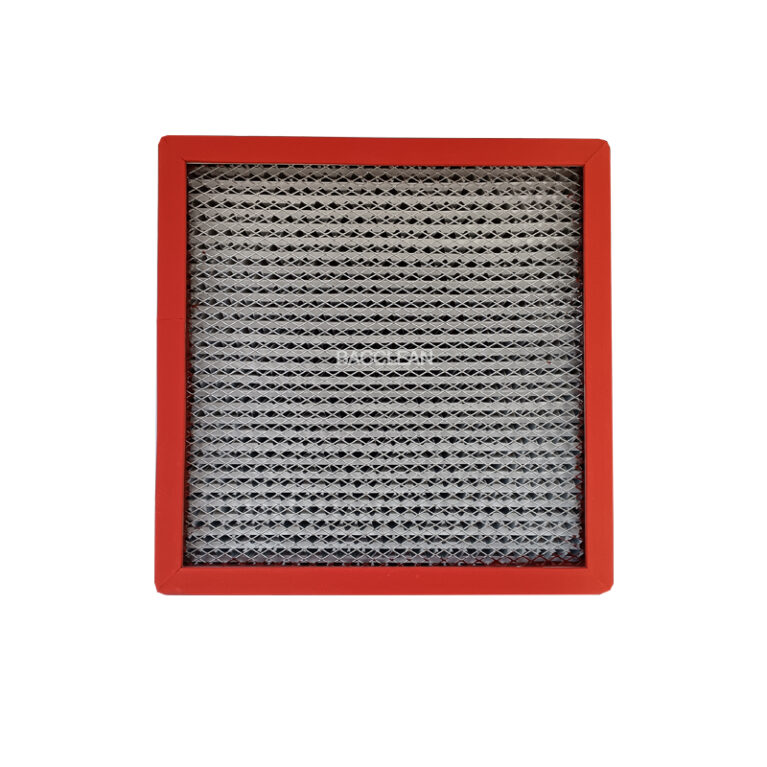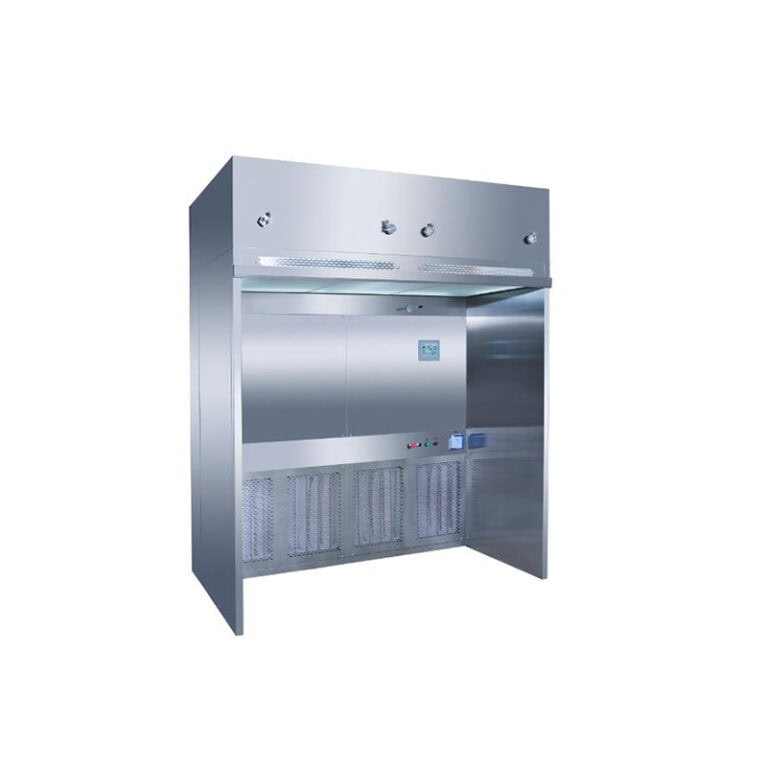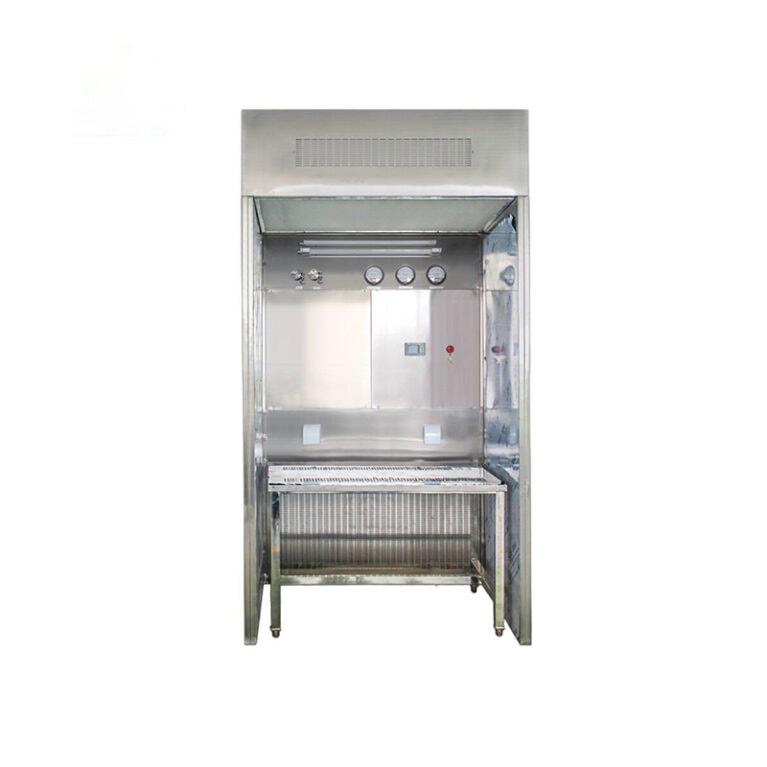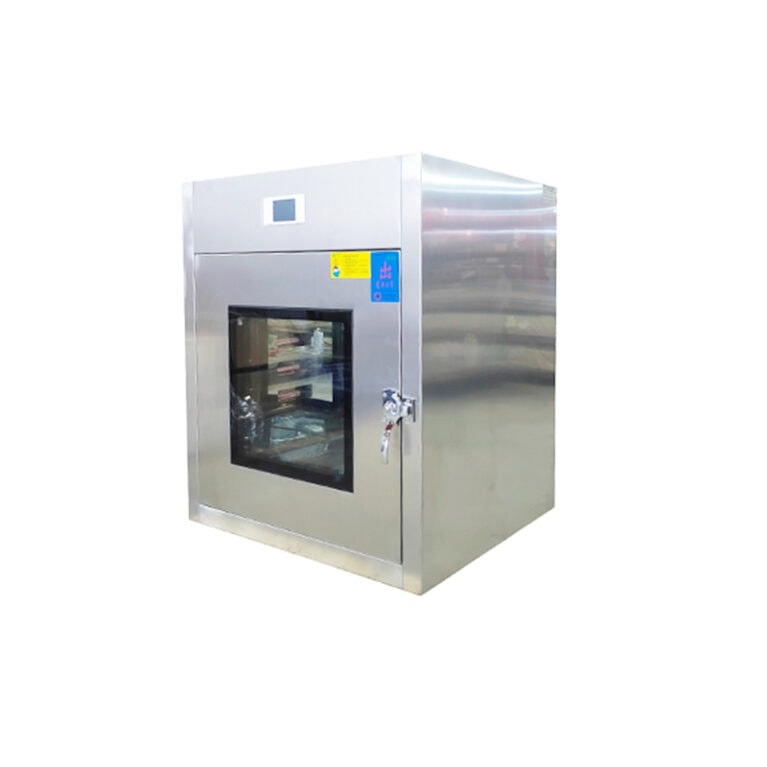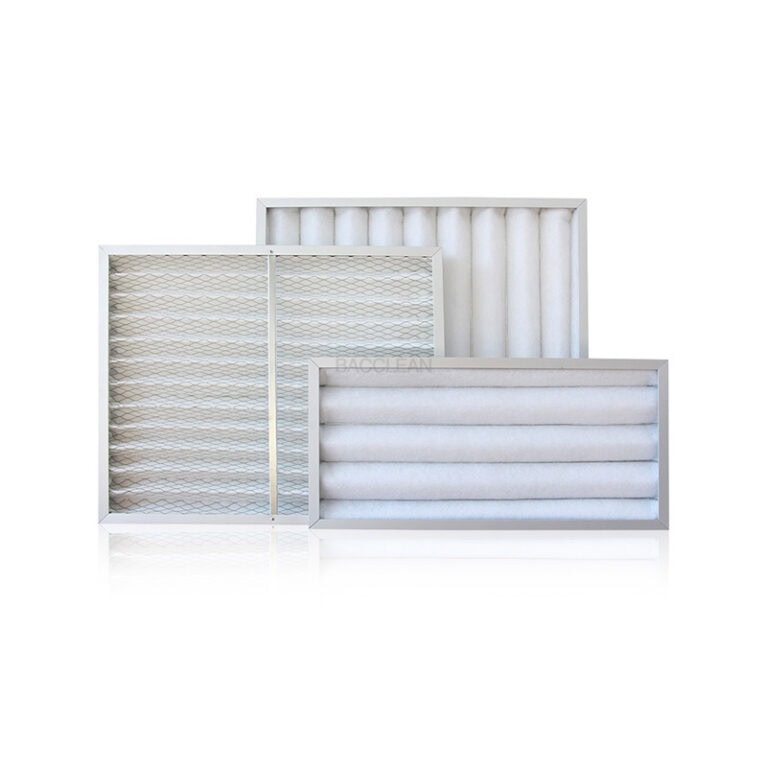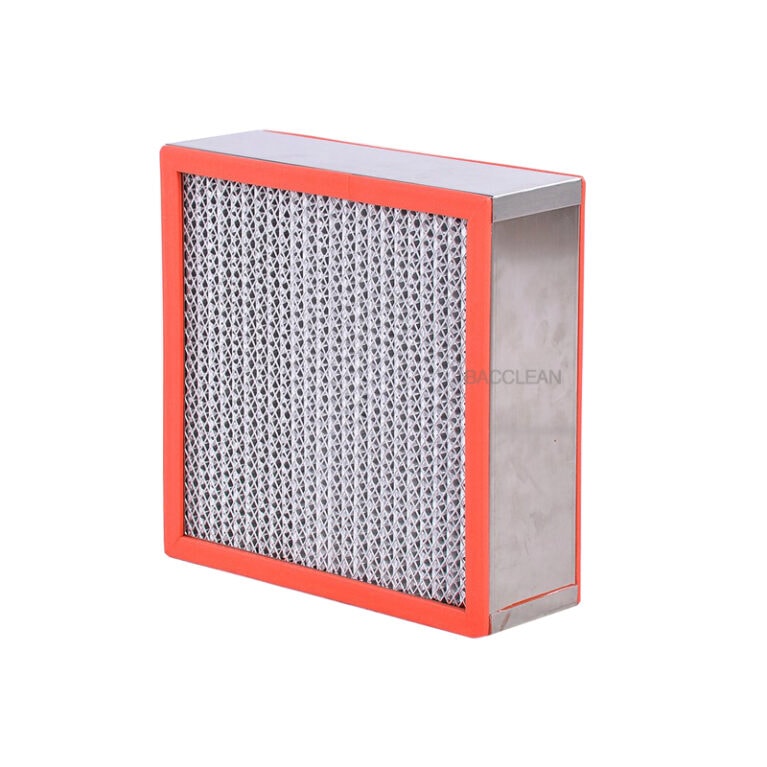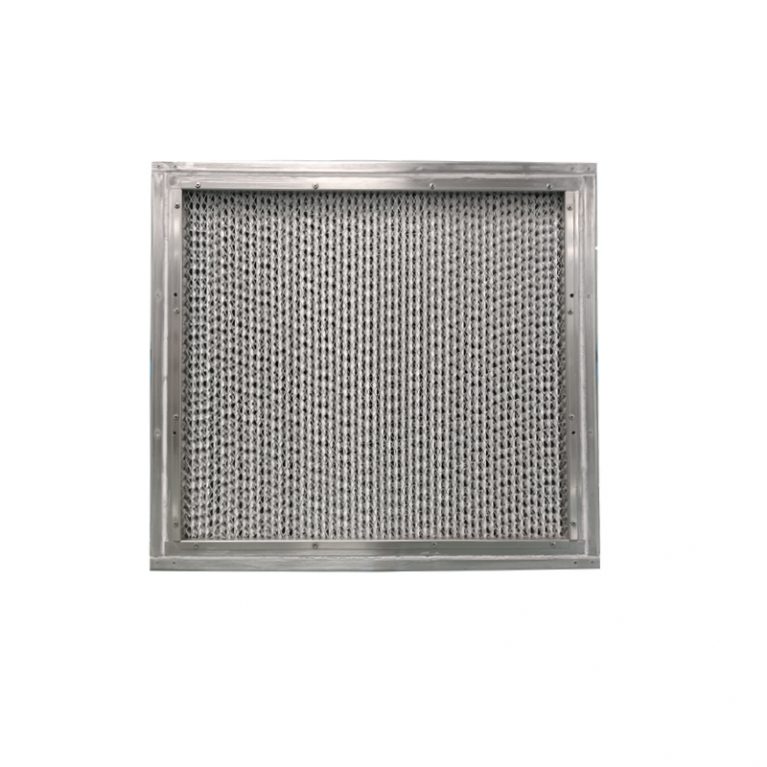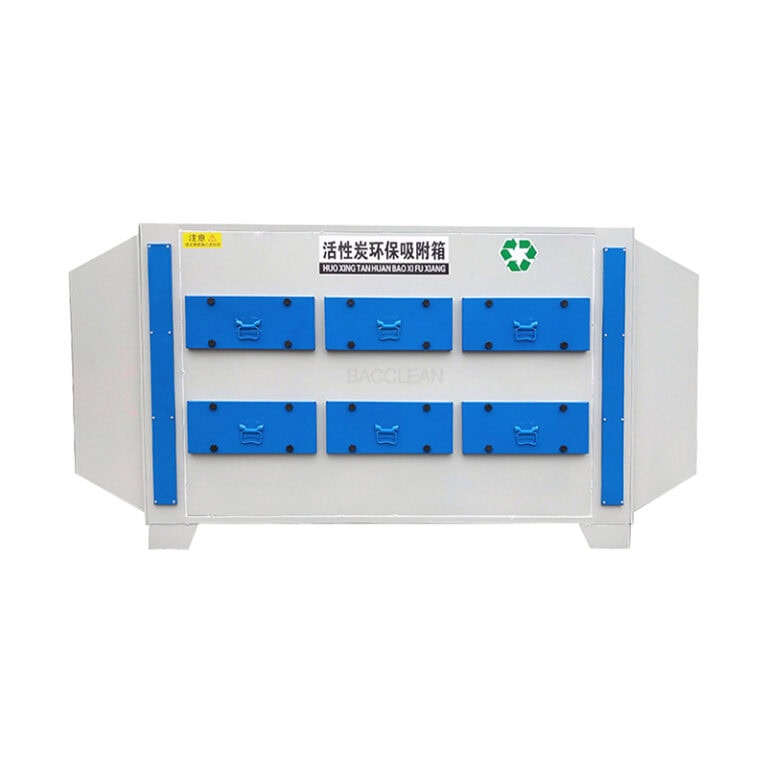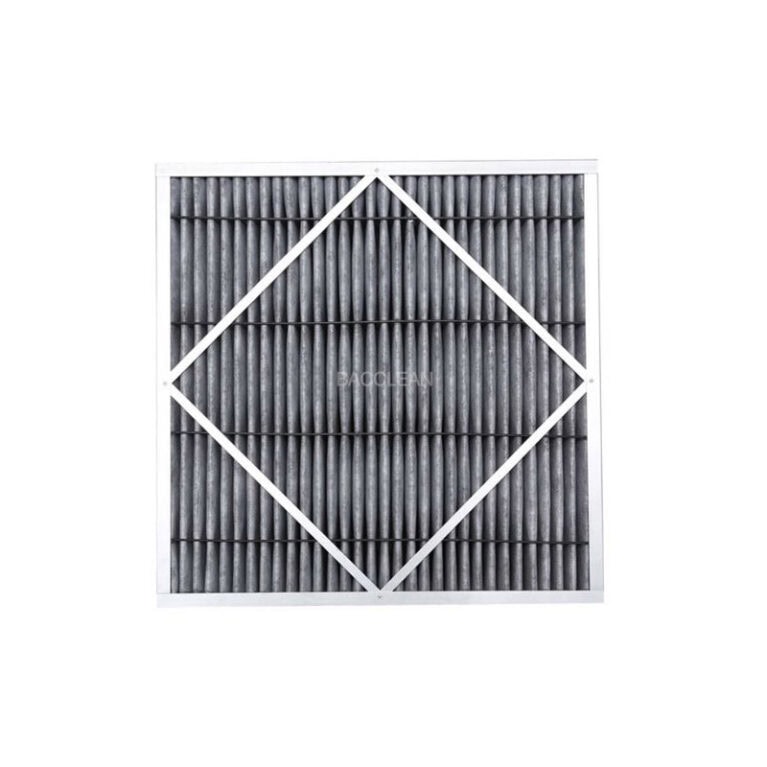تؤثر نافذة النقل المدمجة، باعتبارها جهازًا رئيسيًا للتحكم في التلوث المتبادل في البيئات النظيفة، تأثيرًا مباشرًا على تأثير التنقية وعمر الخدمة من خلال صيانتها اليومية. يجب أن تتمحور الصيانة حول الجوانب الأربعة الأساسية "التنظيف والفحص والمعايرة واستبدال المواد الاستهلاكية"، وصياغة إجراءات موحدة مع هيكل المعدات (أجهزة التعشيق وأنظمة التنقية ومكونات الختم وما إلى ذلك). وتتمثل الطرق المحددة فيما يلي:
1. التنظيف الأساسي اليومي: حافظ على نظافة المقصورة الداخلية
مسح السطح
استخدم قطعة قماش خالية من الوبر مغموسة في كحول طبي 75% أو منظف محايد (مثل محلول مخفف من سائل غسيل الأطباق) لمسح الجدران الداخلية للنوافذ المنقولة والجوانب الداخلية للأبواب والأرفف والأسطح الأخرى لإزالة أي غبار أو بقع أو علامات سائلة متبقية.
انتبه بشكل خاص لتنظيف المناطق المعرضة لتراكم الغبار، مثل المصباح فوق البنفسجي ومخرج الهواء في الفلتر، لتجنب انسداده والتأثير على الوظيفة.
بعد التنظيف، امسحه مرة ثانية بقطعة قماش خالية من الوبر مبللة بماء نقي أو ماء معقم لإزالة أي بقايا من مواد التنظيف (خاصة في الصناعات الدوائية والغذائية).
تنظيف الشريط المطاطي مانع التسرب
استخدمي فرشاة ذات شعيرات ناعمة أو قطعة قماش خالية من الوبر لتنظيف الغبار في فجوات الشرائط المطاطية لمنع سوء الإغلاق. إذا كانت هناك بقع على سطح الشريط المطاطي، يمكنك مسحه برفق بالكحول (تجنب استخدام المذيبات المسببة للتآكل لمنع تقادم الشريط المطاطي).
II. فحص المكونات الأساسية: التأكد من الأداء الوظيفي العادي
فحص جهاز التعشيق (يومياً)
اختبر وظيفة تشابك البابين الجانبيين: افتح أحد البابين الجانبيين ولاحظ ما إذا كان الباب الجانبي الآخر مغلقًا بالكامل (لا يمكن سحبه). بعد إغلاق هذا الباب الجانبي، حاول فتح الباب الجانبي الآخر وتأكد من إمكانية فتحه بشكل طبيعي.
إذا تعطل التعشيق (مثل إمكانية فتح كلا البابين في وقت واحد)، يجب إيقافه وإصلاحه على الفور (ربما بسبب أقفال ميكانيكية مفكوكة أو أعطال في المستشعر الإلكتروني أو غير ذلك) لمنع تلوث الهواء.
فحص المصباح فوق البنفسجي (أسبوعيًا)
لاحظ ما إذا كان أنبوب المصباح يتوهج بشكل طبيعي (ما إذا كان يضيء بعد بدء التشغيل). إذا تحول أنبوب المصباح إلى اللون الأسود أو وميض أو لم يضيء، فهذا يشير إلى أنه قد تقادم أو تلف ويحتاج إلى استبداله في الوقت المناسب. (عادة ما يكون العمر التشغيلي للمصابيح فوق البنفسجية من 800 إلى 1000 ساعة. يوصى بتسجيل وقت الاستخدام).
افحص الحماية من التعشيق للمصباح فوق البنفسجي: افتح أيًا من البابين الجانبيين وتأكد مما إذا كان المصباح فوق البنفسجي ينطفئ على الفور لمنع تعرض الأفراد للأشعة فوق البنفسجية.
فحص المرشح عالي الكفاءة (HEPA/ULPA) (شهريًا)
لاحظ ما إذا كان هناك تراكم غبار أو تلف أو تشوه واضح على سطح الفلتر.
بالنسبة لنافذة النقل المزوّدة بمروحة، تحقق مما إذا كانت المروحة تعمل بشكل طبيعي (ما إذا كان هناك أي ضوضاء غير طبيعية، وما إذا كان حجم الهواء قد ضعف). إذا انخفض حجم الهواء بشكل كبير، فقد يكون الفلتر مسدودًا، ويجب اختبار المقاومة (من خلال مقياس الضغط التفاضلي). إذا تجاوز 1.5 ضعف المقاومة الأولية، فيجب استبداله.
فحص مولد الأوزون (إذا كان متاحًا) (شهريًا)
تأكد مما إذا كان تركيز الأوزون يفي بالمعيار (يمكن استخدام كاشف الأوزون). إذا كان التركيز غير كافٍ، فقد يكون ذلك بسبب تقادم المولد أو تسرب خط الأنابيب، ويلزم إجراء الصيانة أو الاستبدال.
تحقق مما إذا كان جهاز تحلل الأوزون (مثل مرشح الكربون المنشط) فعالاً في منع تسرب الأوزون المتبقي.
ثالثاً - ثالثاً. استبدال المواد المستهلكة: تحديث الأجزاء الضعيفة بانتظام
أنبوب مصباح الأشعة فوق البنفسجية
الاستبدال وفقًا لوقت الاستخدام أو كفاءة الإضاءة (يوصى بالاستبدال كل 6 إلى 12 شهرًا. حتى لو كان لا يزال بإمكانه إصدار الضوء، فقد تكون كفاءة التعقيم قد انخفضت. عند الاستبدال، اقطع التيار الكهربائي وارتدِ قفازات (لتجنب تلويث بصمات اليدين لأنبوب المصباح والتأثير على انتقال الضوء).
فلتر عالي الكفاءة
استبدله بناءً على نتائج مراقبة المقاومة أو العمر الافتراضي للخدمة (عادةً من 6 إلى 12 شهرًا، اعتمادًا على نظافة البيئة). أثناء الاستبدال، يجب إجراء العملية في بيئة نظيفة لتجنب تعرض المرشح للملوثات. عند التركيب، تأكد من أن حشية الختم مناسبة بشكل جيد وعدم وجود تسرب للهواء.
شريط مطاطي مانع للتسرب
إذا تبين أن الشريط المطاطي متقادم (متصلب أو متشقق أو فاقد للمرونة) أو تالف أو غير محكم الإغلاق (توجد فجوة بعد إغلاق الباب)، فيجب استبداله في الوقت المناسب بشريط مطاطي من نفس المواصفات (يوصى باستخدام مادة مطاط السيليكون المقاومة لدرجات الحرارة العالية والمنخفضة والتقادم).
ملحقات مولد الأوزون
يجب استبدال أنابيب الأوزون، ومرشحات الكربون المنشط، وما إلى ذلك، على الفترات الزمنية التي توصي بها الشركة المصنعة لضمان فعالية التطهير والسلامة.
Iv. المعايرة المنتظمة والاختبار الوظيفي (كل ثلاثة أشهر)
معايرة المؤقِّت
قم بمعايرة أجهزة التوقيت الخاصة بالتطهير بالأشعة فوق البنفسجية، وتشغيل المروحة، وما إلى ذلك، للتأكد من أن الوقت المحدد متوافق مع وقت التشغيل الفعلي (على سبيل المثال، إذا تم ضبط 30 دقيقة من التطهير يجب أن يكون خطأ التشغيل الفعلي ± 1 دقيقة).
فحص السلامة الكهربائية
افحص ما إذا كان سلك الطاقة والقابس تالفين وما إذا كان التأريض جيداً (لمنع التسرب). استخدم مقياس متعدد للتحقق من استمرارية كل مكون كهربائي (مثل الملامسات والمرحلات) لتجنب حدوث قصر في الدوائر الكهربائية أو الدوائر المفتوحة.
اختبار النظافة (سيناريوهات ارتفاع الطلب)
بالنسبة لنقل النوافذ في صناعات مثل المستحضرات الصيدلانية والإلكترونيات، من الضروري تكليف وكالة اختبار خارجية بانتظام (كل ثلاثة أشهر مثلاً) باستخدام عداد الجسيمات لاختبار النظافة داخل الصندوق (مثل ما إذا كان يفي بالمستوى 5 من ISO) والتحقق من تأثير المرشح.
V. التعامل مع الظروف الخاصة
التلوث المفاجئ: إذا كان الجزء الداخلي من نافذة النقل ملوثًا بالملوثات (مثل تسرب سائل أو تلوث الدم)، يجب مسحه تمامًا على الفور بمطهر يحتوي على الكلور (مثل محلول مطهر يحتوي على الكلور 500 ملجم/لتر). بعد 30 دقيقة من العمل، يجب تنظيفها بماء معقم لمنع البقايا من تآكل المعدات.
إهمال طويل الأمد: عندما لا يكون الجهاز قيد الاستخدام لأكثر من أسبوع واحد، يجب إيقاف تشغيل مصدر الطاقة وتنظيف الجزء الداخلي تمامًا وإبقائه جافًا. قبل إعادة التشغيل، يجب إجراء فحص شامل لوظائف التعشيق والتنقية، ويجب تشغيل برنامج تطهير فارغ مرة واحدة قبل الاستخدام.
الملخص
إن جوهر الحفاظ على نافذة النقل المدمجة هو "الوقاية أولاً": الحد من تراكم التلوث من خلال التنظيف اليومي، وضمان الوظيفة الطبيعية للمكونات الرئيسية من خلال الفحص المنتظم، واستبدال المواد الاستهلاكية في الوقت المناسب للحفاظ على كفاءة التنقية، وفي الوقت نفسه، صياغة خطط صيانة مخصصة بناءً على متطلبات المشهد (مثل مستوى النظافة، وطريقة التطهير) (على سبيل المثال، تركز المستشفيات على فحص المصباح فوق البنفسجي ومانع التسرب، وتركز صناعة الإلكترونيات على مراقبة مقاومة المرشح). لا تؤدي الصيانة الموحدة إلى إطالة عمر المعدات فحسب، بل تضمن أيضًا استقرار البيئة النظيفة، وتجنب خطر التلوث المتبادل الناجم عن تعطل المعدات.
